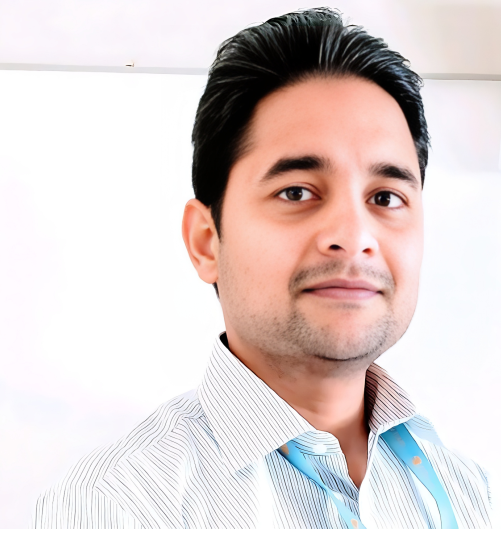Dr. Chaitanya Krishna G.

Position
Assistant Professor
Unit
Department of Civil and
Contact Info
Media Links
PROFILE
EDUCATIONAL BACKGROUND
RESEARCH INTERESTS
TEACHING
SELECTED PUBLICATIONS
AWARDS AND HONORS
RESEARCH KEYWORDS
Dr. Krishna is a Structural Engineering faculty member at AIT. He joined in late 2021 after completing his PhD and working as an assistant professor at the University of Tokyo.
Dr. Krishna’s expertise lies in understanding and providing engineering solutions to buildings subjected to earthquakes. His research covers topics like understanding how buildings get damaged during earthquakes, making buildings stronger to withstand earthquakes, and using math to manage disasters better.
He believes in solving engineering problems by considering both technical and social factors. Some of his accomplishments include creating affordable and user friendly ways to strengthen buildings against earthquakes and
- Ph.D. in Earthquake Disaster Mitigation Engineering, The University of Tokyo, Japan, 2017
Topic: An improved seismic capacity assessment using applied element method and operational modal analysis
- Master of Technology in Structural Engineering, Indian Institute of Technology Bombay, India, 2011
Topic: Urban seismic risk assessment using GIS - Bachelor of Technology in Civil Engineering, Acharya Nagarjuna University, India, 2009
Thesis Topic: Buckling analysis of columns by differential quadrature method
- Structural Engineering
- Numerical Modelling
- Building Damage Analysis
- Earthquake Engineering
- Modal Analysis of Buildings
- Computational disaster management
- CE7211: Computer Methods of Structural Analysis
- CE7212: Finite Element Methods in Engineering
- CE729009: Structural Identification Methods in Engineering
- Timsina, K., Amatya, N., Gadagamma, C. K., & Meguro, K. “Retrofitting Solution for Soft Story Mitigation in Reinforced Concrete Frame Buildings: A Socio-technical Approach Using Numerical Optimization”. Journal of Earthquake and Tsunami, 2350040 (2024). https://doi.org/10.1142/S1793431123500409
- Ali Javed, C. K., Ali, K., Afzal, M. F. U. D., Mehrabi, A. 1., Meguro, K., “Micro-Scale Experimental Approach for the Seismic Performance Evaluation of RC Frames with Improper Lap Splices”, {Infrastructures}, Volume 8, Number 3, MDPI (2023). https://www.mdpi.com/2412-3811/8/3/56
- Hossain, M. S., Numada, M., Mitu, M., Timsina, K., Chaitaniya K., Rahman, Md. Z., Kamal, A. S. M. M., and Meguro, K., “Simplified engineering geomorphic unit-based seismic site characterization of the detailed area plan of Dhaka city, Bangladesh”. Scientific Reports, 13(1), 11151 (2023). https://doi.org/10.1038/s41598-023-37628-6
- Timsina, K., Krishna, C. G., Meguro, K., “Sociotechnical evaluation of the soft story problem in reinforced concrete frame buildings in Nepal”, Journal of Performance of Constructed Facilities, Volume 35, Number 4, Pages 04021019, American Society of Civil Engineers (2021). https://doi.org/10.1061/(ASCE)CF.1943-5509.0001582
- Hossain, M. S., Chaitanya, K., Bhattacharya, Y., Numada, M., Kamal, A. S. M. M., Meguro, K., “Integration of smart watch and geographic information system (GIS) to identify post-earthquake critical rescue area part. II. Analytical evaluation of the system”, Progress in Disaster Science, Volume 9, Pages 100132, Elsevier (2021). https://doi.org/10.1016/j.pdisas.2020.100132
- Hossain, M. S., Gadagamma, C. K., Bhattacharya, Y., Numada, M., Morimura, N., Meguro, K., “Integration of smart watch and Geographic Information System (GIS) to identify post-earthquake critical rescue area part. I. Development of the system”, Progress in Disaster Science, Volume 7, Pages 100116, Elsevier (2020). https://doi.org/10.1016/j.pdisas.2020.100116
- Chaitanya Krishna GADAGAMMA, Muneyoshi NUMADA, Kimiro MEGURO, “Material Property Identification using Operational Modal Analysis and Experimental Modal Analysis”, SEISAN KENKYU, 2020, Volume 72, Issue 4, Pages 297-302, Released August 20, 2020. http://dx.doi.org/10.11188/seisankenkyu.72.297
- Khin Myat Kyaw, Chaitanya Krishna Gadagamma, Kyaw Kyaw, Hideomi Gokon, Osamu Murao, Kimiro Meguro, “Seismic Fragility Analysis of Poorly Built Timber Buildings in Yangon Slum Areas”, Journal of Disaster Research, 2020, Volume 15, Issue 3, Pages 407-415, Released March 30, 2020. http://dx.doi.org/10.20965/jdr.2020.p0407
- Kishor TIMSINA, Chaitanya Krishna GADAGAMMA, Kimiro MEGURO, “A Comprehensive Field Study to Examine the Complications in Soft Storey Problem in Nepal”, SEISAN KENKYU, 2019, Volume 71, Issue 6, Pages 1059-1063, Released December 03, 2019. http://dx.doi.org/10.11188/seisankenkyu.71.1059
- Chaitanya K GADAGAMMA, Shanthanu M. RAJASEKHARAN, Yasushi ARAI, Shyoki SATO, Toshiaki KATAGIRI, Muneyoshi NUMADA, “Site and Scenario Specific Design Ground Accelero-grams using Observed Ground Motions”, SEISAN KENKYU, 2019, Volume 71, Issue 4, Pages 851-857, Released July 31, 2019. https://doi.org/10.11188/seisankenkyu.71.851
- Kishor TIMSINA, Chaitanya K GADAGAMMA, Muneyoshi NUMADA, Kimiro MEGURO, “Development of a Numerical Optimization Framework for Solving Soft-Storey Problem in Reinforced Concrete Frame Buildings”, SEISAN KENKYU, 2019, Volume 71, Issue 4, Pages 813-823, Released July 31, 2019 https://doi.org/10.11188/seisankenkyu.71.813
- Chaitanya Krishna GADAGAMMA, Shanthanu Menon RAJASEKHARAN, Yasushi ARAI, Shyoki SATO, Toshihiko KATAGIRI, Muneyoshi NUMADA, “Observations of Strong Motions at Tokyo Metro Stations at Different Depths”, SEISAN KENKYU, 2018, Volume 70, Issue 4, Pages 299-308, Released August 01, 2018. https://doi.org/10.11188/seisankenkyu.70.299
- C. Gadagamma, A. Min, H. Gokon, K. Meguro, and K. Yu, “Development of Fragility Functions of RC Buildings in Yangon City Using Push over Analysis,” Journal of Disaster Research, Vol.13, No.1, pp. 31-39, 2018. http://dx.doi.org/10.20965/jdr.2018.p0031
- Best Young researcher award in 18th USMCA-2019 held on 8-9 December at Yangon Technological University, Myanmar
- The Japanese Government Scholarship, awarded by the Ministry of Education of Japan to study at the University of Tokyo from 2013-2016
- Structural Engineering
- Earthquake Engineering
- Seismic Retrofitting
- Building Damage Analysis
- Modal Analysis
- Disaster Management
- Applied Element Method
- Operational Modal Analysis
- Reinforced Concrete Design
- Urban Disaster Mitigation

